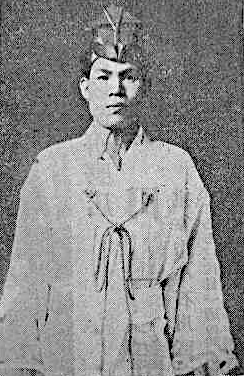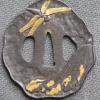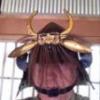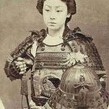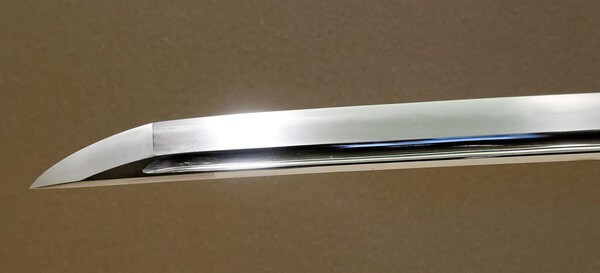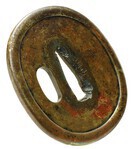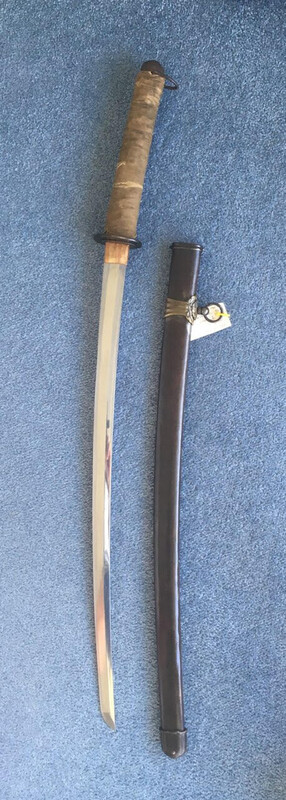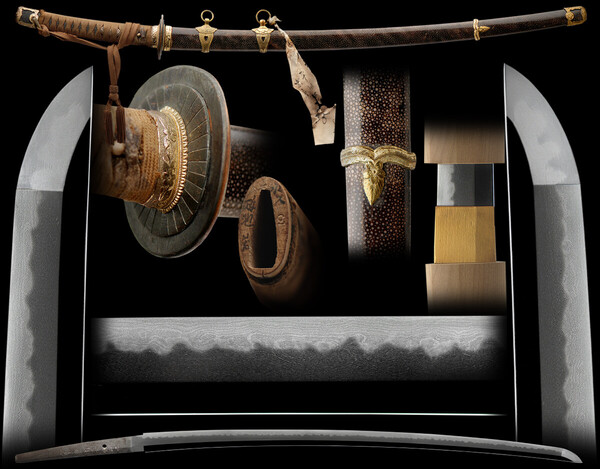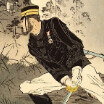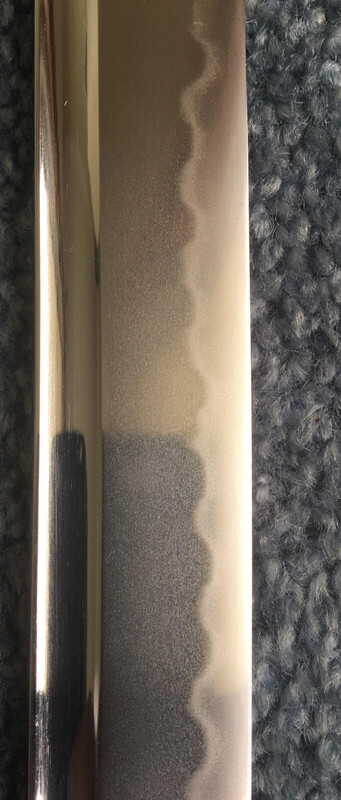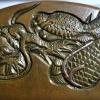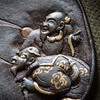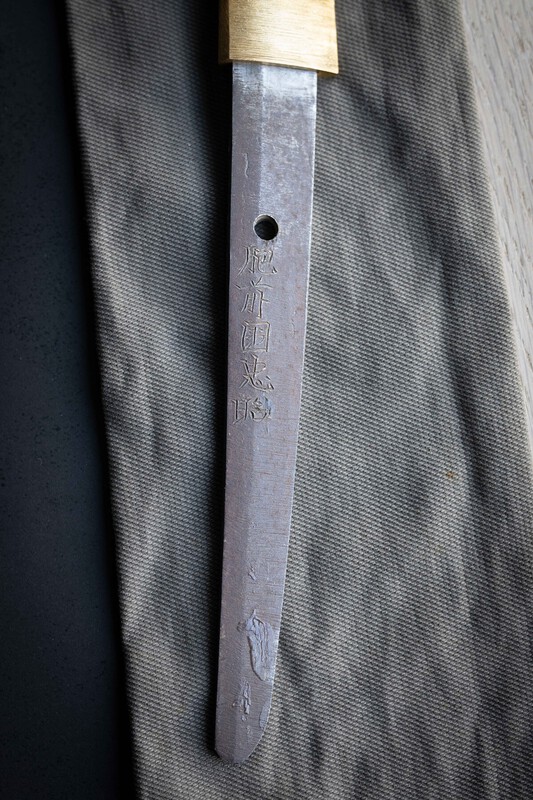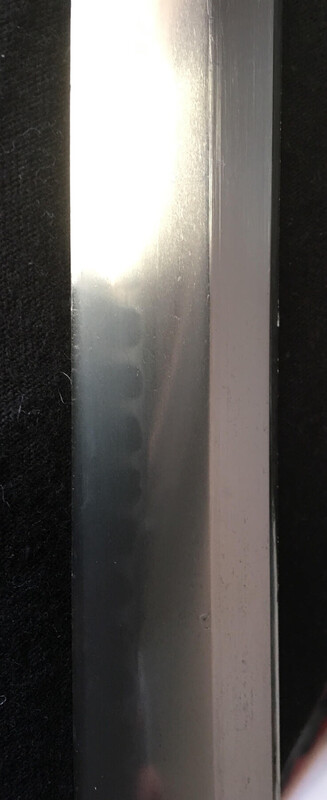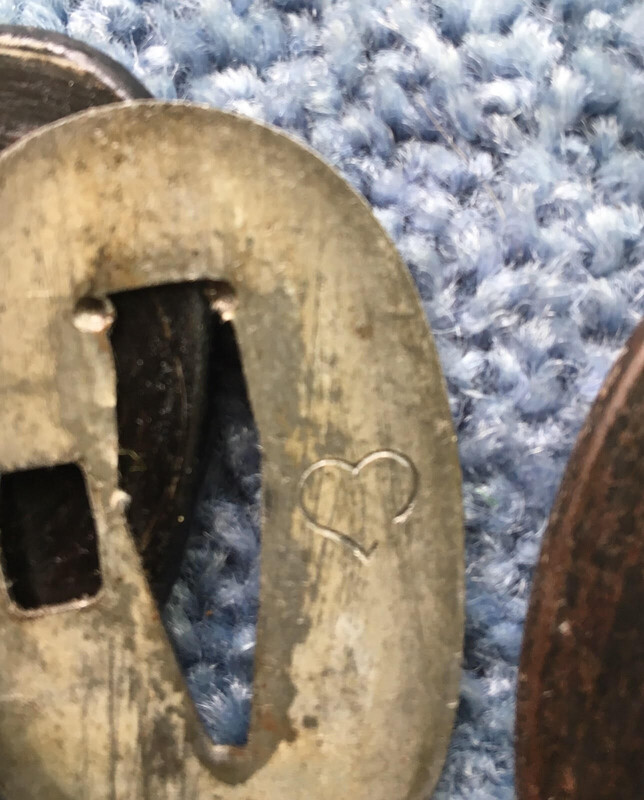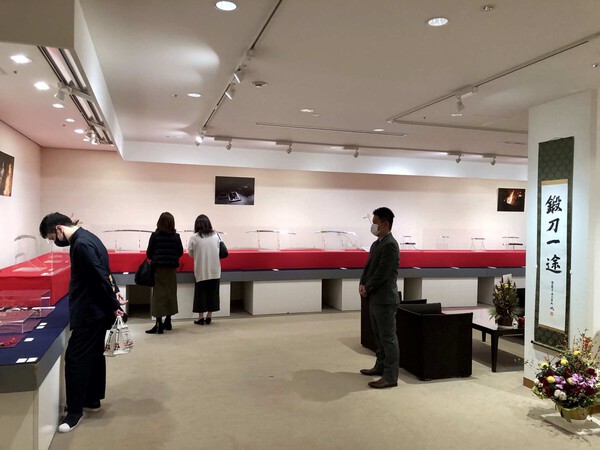Leaderboard
Popular Content
Showing content with the highest reputation on 02/11/2021 in all areas
-
Haha, thank you so much for the kind words. You know what, I would love to share my collection with everyone on the forums. Once I receive my commision orders, I'll make a brand new post to show my collection7 points
-
Great news the tsuba arrived today after 5 months I will post more information of the chain of events leading up to this delivery day4 points
-
The thread we have been having on osoraku-blades got me thinking about ways that Japanese (and I suppose other) craftspeople have made use of damaged, incomplete or otherwise compromised weapons, armor, and other related gear. Actually, I thought about this situation right after I hit the “send” button on a note to that thread and went over to see what was being provided on Ebay. There I saw a ‘kayakuire’ (call it a powder flask) that looked suspiciously like it was made of a pair of old lacquer sake cups with the bases removed and the rims glued together. That got me thinking about other re-purposed and re-used samurai gear and I thought of some other items that fit that description. Think of all those nice old kozuka that became fork handles. My personal feeling is that lots of the brass embellished tsuba of the early Edo period were Muromachi-age plane-janes that got “tarted up” after peace broke out. If that happened in early Edo times, just look at what happened in the Meiji era. The line between menuki and tobacco pouch ornaments seems suspicious. I recall seeing inro made of armor pieces. And the heavily repouse’d iron fittings on Sendai tansu cabinets really look like old armor elements. I have seen a couple of mekugi-nuki that were made of old sword nakago, in fact I carry one myself. I am also really interested in all those nice old matchlocks that got “modernized” with percussion cap locks or even bolt actions. What should we think about such items? Are they “fakes” and misrepresentations? Should be hate them or at least avoid them? Is ubu aways better? Or are these sorts of things normal residues of sword use and artistry? Peter4 points
-
I started this as new post so anyone who has lost or unsure of delivery can use this as a guide. May be too specific as it from France to the UK but there will be similarities Brought from Jean and posted from France on 12/10/20 Awaiting custom clearance on 14/10/20 – Arrived 11/02/21 – Almost four months After waiting for a month or so I emailed Parcelforce twice and never a reply Left it a little longer and phoned them. The recorded message said they could only reply to a medical emergency! Waited then tried again but still the same message but this time I waited to be connected. The person was very helpful stating it should never had taken so long t deliver. After they contacted customs it went quiet which is not surprising when dealing with this type of organisation. Later Held in depot please contact us on 03448 00 44 66 with your parcel number to discuss with us. This is order when phoning Parcel Force on 03448 00 44 66 Type in your parcel number and supply necessary details. After inputting tracking number select option 3 when it says it’s awaiting customs clearance just hold on and you will speak to a human being. I then had to email pfw-ccb@parcelforce.co.uk This department deals with high value items (I believe this is over £1,000 even from within the EU and they said it did not have my parcel for review. So now back to Parcelforce enquiries who said a claim must be made by the sender Jean contacted the original shipping company and the have 90 days (07/03/21) to find it or settle the claim but the maximum claim is 1,000 euro Jean then raised a claim I talked this morning. to Colissimo International (equivalent of Parcel Force International). I lodged a claim. It is registered and they have 40 days from now (07/03/21) to solve the problem or be reimbursed. Insurance is limited to 1000€. First time I took one. They are going to reactivate the tracking number. I left them all the data names, addresses, e-mail, amount, weight, paid price. I let Jean know I received the tsuba today (11/02/21) Jean Great news. It seems that the French Post (Colissimo international) is much more effective than Parcel Force International. That’s the second time in 2 months I had a problem of a parcel which disappeared from the tracking system and which reappeared after lodging a claim. I bet you did not have to show any invoice. BTY – No invoice was required. The parcel was well labelled and clearly shows the sender and recipients address. It was very dirty and what appears to be a foot mark or similar on the back of the package. I wonder if it had just fallen of the shelf (out of sight) Some asked why I’d taken so long to chase it up. My delay was due to the Covid, leaving the EU, the reluctance to talk unless a medical emergency and of course the slowness of this type of organisation. At the end of the day, I always thought it would turn up To sum if you are missing a parcel After a month or so contact the shipping company (in my case Parcelforce 03448 00 44 66) If over the item is over £900/£1,000 email high values section on Parcelforce: pfw-ccb@parcelforce.co.uk If all fails ask the sender to initiate a claim with the original shipper PS It's vital for the seller to keep all delivery paperwork until it is received by the buyer3 points
-
I kept my first sword for 15 years, a shingunto with a worn out Koto blade. The fittings were stamped with number 2 and the blade would have been good in its ubu state. I sold it to afford a high-class Shinto blade in a Shingunto koshirae. That sword immediately showed me what a first class blade should look like and most of my collection at that time went because the dross had fallen from my eyes. I like John's phrase "... it will be interesting in 30 years time to see where it began and how well I've done since then!" If the occasion warrants I sometimes ask a beginning collector "Where would you like to be in 5 years time?" Its good to measure one's progress even if money is tight in one's life circumstances. BaZZa.3 points
-
No hard feelings. I just cannot let us go down a road where it seems we are encouraging untrained polishing. And judging by just ONE post on his FB page where he shows an injury and about 3 others comment on their injuries while polishing their own swords....my instincts are correct. There must be hundreds of guys out there "teaching" themselves polishing from FB and Youtube videos. I know there are lots that support it. I'm just saying let's not actively spend time discussing this. Thanks for your understanding and good luck with your sword.3 points
-
Hello my Nihonto friends! As my collection grows, I am seeking to lighten up my collection and let go of this beautiful set of daisho within my collection. This is a superb set of DAI-SHO by skillful sword smith the 25th generation Fujiwara KANEFUSA 二十五代藤原兼房. His real name is KATO Kazuo 加藤賀津雄 who was born in 1957, as a 2nd son of the 24th generation Fujiwara KANEFUSA 二十四代藤原兼房. At the age of 18, he started training in famed living National treasure Gassan Sadakazu 月山貞一. After years of diligent study, he became an official authorized sword maker in 1982 and then established his own atelier in 1984. The founder Kanefusa 兼房 who paralleled to KANESADA 兼定 or KANEMOTO 兼元 has flourished throughout Japan ever since Muromachi Koto period. This masterpiece set of DAI-SHO bears SOUSHU manner in mind, especially ardently admired by the work of Shizu-Sasburo KANEUJI 志津三郎兼氏 from late Kamakura to Nambukucho period. There are splendidly active with abundant activities of Nie and Nioi, vividly bright in extreme beauty. Among similar works, this set of DAI-SHO was made to order. Blade construction:Shinogi-zukuri, Iori-mune, Width of base is wide standing firmly on base and less degree of tapering from base to elongated large Kissaki. The shape is created in a brave and lively style which is widespread during the period of the Northern and Southern Warring States Period Forging(Hada): Forging pattern is conspicuous Itame-hada with an indication of some large Mokume and streaming Masame-ware appears mostly along boundary lines. The steel gives off sparkling martensite crystals of Ji-Nie against bluish steel of Jigane to generate long gleaming lines of Chikei over the Hiraji surface. Temper(Hamon): Hamon is martensite crystals of frosty Nie based with misty-Nioi where boundary area shines clear and bright along varied in shape and height, flamboyant lines such as large-Choji, Tadpole-Choji or Waist constricted Choji and so on. There works with intensive long lines of Sunagashi and thick lines of Kinsen or Inazuma. The entire quenching state is impressively clear and bright in full of Soushu-den tradition. Temper of tip(Boshi): Boshi forms flame Kaen with an indication of intensive Hakikake. Tang(Nakago): Both Nakago are UBU in original. One Mekugi-ana peg hole. Slanting left Sujikai filemark. Single-bevelled Ha- agari Kurijiri heel end. The signature in Hakiomote front is Fujiwara KANEFUSA-saku 藤原兼房作, To order of MITSUMASA-uji generations 為光将氏重代 in new line. The other side is chiselled with the date of year A highly Auspicious day, October, Dog, the 1st calendar sign of Heisei (1994) 為光将氏重代 平成甲戌年十月吉祥日. Gold plated Silver Habaki collar, preserved in Shira-Saya mountings. Recent polish/Condition scale: mint (using a scale of mint-excellent-very good-good-fair-poor) Note: I apologise for the real life photos as I am not very good at taking them but feel free to PM me to take some more. Asking Price: 13,000.00 Aud2 points
-
2 points
-
2 points
-
2 points
-
2 points
-
2 points
-
I don't want to hijack my own thread, but here is another Manchurian RS sword from my stash. Note the "RAIL" stamp, it doesn't look like it could be converted into a "P", as Bruce suggests, but nothing is imposible. Also interesting is that the mune numbers in Japanese characters 2430, are stamped on the fittings in Arabic numerials. Has anyone come across this before?2 points
-
Although David's link above shows the Hatakeyama family, most people instantly associate these 'Wa-chigai' rings with the Wakisaka. (Uwe is the expert around here.) https://ja.wikipedia.org/wiki/脇坂氏#:~:text=脇坂氏が史上に,系譜は明確ではない。&text=家紋は輪違い、通,安明であるという。2 points
-
I start a group 3 weeks ago on Facebook for fans of Nihonto in Canada Dedicated To The Preservation And Promotion of Japanese Swords, Swordsmiths, And Related Crafts Nihonto Canada Discussion/Trade Sword/Fittings/Armor(NIHONTO) Anyone who wants to talk about Nihonto are welcome No Martiel Arts or any other kind of sword will be allowed. I created this page to regroup Canadians who love Nihonto Arts. Dissusion and being able to sell / buy items in Canada ENJOY Nihonto Canada (Preservation And Promotion Of Nihonto) | Facebook2 points
-
David T - There are few restrictions for carrying a sword in San Mateo County - Bring it in a bag or gun case and you can walk right into the hotel and show room. The hotel staff are well aware of our idiosyncrasies by now... -t2 points
-
Debate rages on whether or not Mantetsu swords are true nihonto, in spite of them receiving papers recently. Here is a Winter 1938 example, with the rare South Manchurian Railway stamp, and mune stamp, N156. This very early production specimen exhibits hada, hamon, and habuchi, all evidence of nihonto. It is mounted in Manchurian RS mounts (made in Manchuria, for the severe weather conditions), that some may say are late war, but I would disagree that they are late war, as I have collected many examples that span many years. So unless any critics of this hypothesis have a cupboard full, or studied them at length, I am sticking to my theory. F&G, and later repeated by Dawson, hypothesized that they were late war Japanese home defense swords, based on very few examples they had seen, and extrapolating then that they were a roughly made RS model. Not so, they are a model in their own right, made in Manchuria for Manchuria. Also note interesting markings on fittings.2 points
-
Great question, Peter, & one I've wondered about. I've always assumed that repurposing of "bits & pieces" is the best use, not to mention a good method of maintaining cash flow, after the usual cessation of warfare-related monetary outlays.2 points
-
Yea they are haha. But my collection is getting to big haha and I've already commissioned quite a few blades in which I will need to pay for haha. By the way here are more close up pictures. I tried my best....im not very good or experienced at taking close up pics, but perhaps these will help show you the jigane a little more.2 points
-
Akitaka (昭孝), Shōwa (昭和, 1926-1989), Niigata – „Akitaka“ (昭孝), civilian name „Nakabayashi Fukutarō“ (中林福太郎), born 1910, he worked as rikugun-jumei-tōshō This is a very beautiful blade. In my experience many/most blades in type 3 mounts are very robust but this is very elegantly shaped and light in hand.2 points
-
2 points
-
2 points
-
Tom Helm, I'm very happy you responded, and in retrospect should have mentioned you and the Northern California Japanese Sword Club for potential guidance... Chris (Vajo), if your missing something in translation, I apologize, nothing complicated, just a young man looking for information on his inherited sword. Again , no one is suggesting the sword is anything but what it is, but simply encouraging a young person to become interested in researching and possibly collecting Japanese swords... I lived in Ca. for many years and attended several SF sword shows as well as many sword and gun shows. I was invited to a gun/sword show in the Bay area years ago and was bringing a Shin-gunto to gather information. I had managed to previously translate the Nakago inscription. There were many sword dealers at the show and most were interested in taking a look at my sword. Not one was able to translate even a single character of the inscription. This was the case as I moved from dealer to dealer, for the most part they had nothing positive to say but " I'll give ya a hunerd dollers fer er." Eventually, I arrived at a booth which had several nice Japanese swords, the gentleman there was very friendly and asked permission to look at my sword. He removed the tsuka and immediately translated the inscription, instantly knew who, when, and where the sword was forged. How could you not be somewhat impressed. He also pointed out it was well forged Gendaito. I relayed to him what I had experienced with most other dealers there and his response was not at all complimentary toward the others. The gentleman was Harunaka Hoshino. I later began hearing negative information about Mr. Hoshino, and was frankly rather stunned judging from my personal experience with him. I have since heard many negative opinions regarding Mr. Hoshino and not for a moment doubt Mr. Tom Helm's assessment of him. However, I did mention Mr. Hoshino's has a spurious reputation, but I also have to say, in my opinion the guy knows his swords.... Agree with John and Bruce, SF sword show is best bet, Tom Helm and others will be there and am sure they will be happy to help, all friendly knowledgeable people. Also, with all due respect to Bruce, I would wait for the sword show with tsuba, unless you are sure of precise measurements, they rarely fit properly off ebay. Again, good luck and best regards to all ! Dave M.2 points
-
I grew up with a few blades at home (nothing a discerning collector would be excited about) plus there was a very good exhibit of medieval European arms and armor closeby, which impressed me greatly. However, I suspected the European subject to be relatively well understood, and thus with somewhat limited excitement or opportunity to come up with something new and instinctively went into a different direction. It was a difficult trip nevertheless, but one thing I am still amazed about is how much of everything I got to see along the way. For some reason passion, history, money, art, politics and much else converged on the path. I've seen the humanity at its basic worst, but met a few talented people who taught me a lot in fields that have nothing to do with swords. Dozens of emails sent over many years spent trying to get inside some prestigious museum only to find out it only owns garbage, while having a friend who would bring out dozens of Durers anytime I visited. Death sentence in one country, a personal conflict with a leading terrorist in another one, protection offered by terrorists in the third one. And all of that because of a few blades!!! Who would have thought.2 points
-
I will always keep my first two swords (Nihonto & Shin Gunto), they aren't anything special but I figure it will be interesting in 30 years time to see where it began and how well I've done since then!2 points
-
MIRACOLO, we are going back the times when Wallenstein wrote „ aus DESSAU kommt uns gute POST...“ needs only four weeks to find him. Best1 point
-
Yesterday I was observing an artisan making Habaki and he used the spiral end of one of these for marking lines on the metal he was working with. The other end was not a blade but a kind of two-curved-pronged measuring compass1 point
-
Regarding the Kodzuka handles being repurposed. I was told that they were also stamped out specially to be mounted in cutlery sets by makers like Komai in the 1870's. You may find this link amusing: http://www.smokingsamurai.com/KOMAI_OTOJIRO.html1 point
-
1 point
-
I also agree with neil, and to point out the very different ashi. Very Chinese looking influenced imho1 point
-
Blade came in and I spent a few minutes cleaning it up. Bad 1. Under the grease, there were some kizu to enjoy with the thin Bizen steel 2. One of the ivory tsuka circles is screwed up. Good It has the start of a special order mei 'BIZEN KUNI JU OSAFUNE' the rest is too worn for a novice to make out Nice tip and ha except for the nip which looks old, maybe it was from a real fight Polish is good enough for study. It does have a nice antique look to it. I was thinking about putting it my booth for the 'I BUY Japanese SWORDS' as I need one in there but I have a clunker type 3 coming in next week. BTW, if any of you get to Jacksonville N.C. let me know and stop by the store, look at some swords and shoot some guns.1 point
-
I know your intentions were good JP but what if a newbie doesn't know he has a GO blade and it gets sent there and gets ruined it's scary the amount of support you say you have1 point
-
I know I've responded to this question many years ago, but I can't find a copy of that answer, so I'll just go with a Cliff's Notes version here. Back in the '80s I had no interest in nihonto, but did have an interest in firearms, and so every once in a while I would buy a copy of Shotgun News off the news stand. This was an oversize pulp paper publication of a few hundred pages, about a quarter of an inch thick, with both commercial and private ads for all types of firearms and related parts and accouterments. The front page, which consisted of about four columns of regular print, was of course where the highest cost ads appeared. There was one ad that always appeared, taking about three inches or so of column height and therefore relatively expensive for the author. It was titled "WANTED - Japanese SWORDS" and had a bit of description and contact information. But what was remarkable was the following that composed most of the ad length: Japanese Swords Japanese Swords Japanese Swords Japanese Swords Japanese Swords Japanese Swords Japanese Swords Japanese Swords Japanses Swords Japanese Swords Japanese Swords Japanese Swords (Edit Note: The above was actually in all caps, but this site's auto-edit will not let me write Japanese in all caps!) Notice the intentional mis-spelling in one of the lines that was likely intended to catch readers' eyes. It was obvious that there was some decent value in such swords for the author to run this same ad in all the issues (3 times a month), but I just passed it off as a quirk not worth investigating. In the late '80s I was involved in an expansion in my company and so was taking a number of cross country flights. On one such journey, I was waiting in a terminal, I think in Phoenix, for my flight back home but not positive of this location. In this terminal there were a hand full of white and plexiglass kiosks, displaying nihonto. I'd never seen such before, and was amazed at the metallurgy, particularly the hamon, of course. I had no idea that swords could be so complex and, well, fascinating, but this still wasn't enough to kick me into gear. A few years later, in 1994, I was on another trip, this time to Dallas, Texas. Having a break at lunch time, I looked up and went to a militaria shop there. The shop had three or four gunto, mostly beat as I remember and in no way comparable to what I'd seen earlier in the airport terminal. Then I came across what was described as a kamikaze tanto, a new concept to me. The shop proprietor, responding to my apparent interest, showed me a book that described the item, Military Swords of Japan, 1868 - 1945, Fuller & Gregory. Being a total newbie, I remember wondering whether this tanto could be a fake, though having no real knowledge of any degree of such in this field. I convinced myself that the tanto was likely good, comparing it to the info in the book and observing the quality of the mount, the bone trim, and the apparent age related wear, and so I bought both the tanto ($250) and the book. The hook was set! Well, it turned out to be a real kamikaze tanto, but not a real nihonto, as it has a mill steel blade, though with a real hamon (perhaps oil quenched). It was unfortunately quite a while before I got clued into good info sources such as the JSSUS and the Robert Cole web site. I remember reading sales sheets from "the R guy" in Pittsburgh and trying to translate the Japanese sword terms into their English counterparts. I think I got about half of the usual terms before I finally found a nihonto dictionary. So that was the start, followed by numerous subsequent hits and misses. I still have the tanto.1 point
-
Hello and welcome. Would you be so kinda to post the opposite side as well? Nice tsuba.1 point
-
I was in my 30s working as an engineer. One of my hobbies was blacksmithing at the time and I was deep in the study of ferrous metallurgy at the time. One day a friend said he knew someone who was selling a Japanese sword and wondered if I was interested because of my interest in blacksmithing. It was just $10 so I told him I would take it. I was stunned the next day with what I saw in the metallurgy of this blade. It was obviously very old and made with enormous skill. It was all I could do to hide my excitement and close the deal. I spent the next six years studying this blade by buying books, going to a few sword shows, and enlisting the help of Paul Allman and Dean Hartley. The first collector I showed it to in Georgia told me nothing about it but managed to make an offer of $11,000. When he pulled it from the saya his voice was crackled and his hands started to tremble. That told me more than his words could have. When I was finally sure of what the sword was I decided to have it polished and submitted for shinsa. The first shinsa before polish was by Kotoken Kajihara at a show in Birmingham , Alabama. He attributed it to the first generation Moriie. The NBTHK shinsa after polish left it with Juyo papers and an attribution to the Ichimonji school of the early to mid kamakura period. I still have the tachi and I have been hooked on Nihonto ever since. It’s hard to build a big collection after starting out so well. The blades I like are too expensive so I have spent more on books. I will leave a few nice polished blades and a lot of books when I’m gone for the next generation.1 point
-
Renowned for their cutting ability, (Mori) YOSHICHIKA, was selected to make swords for the Japanese Imperial Guard. Some of his blades even have cutting tests engraved, where they were tested on pigs, (dead ones I hope!). From my research, there were father and son, (Shodai and Nidai) YOSHICKICKA. This blade was found in very old 'D' Guard mounts, so it is Shodai. There is however no date, no stamps. He resided in Tokyo, and made swords in the Taisho and Showa periods. Rated as a 1.5 million Yen smith, he is regarded as a high-grade Gendaito. This example exhibits mokume hada, gunome-midare hamon?, and habuchi. I would appreciate seeing other other examples of YOSICHICKA work and mei for my research.1 point
-
Everyones an expert on the internet Also see a lot of pots Kettle & Black syndrome too1 point
-
I feel like I had always known about Japan, which is odd for a kid from Wisconsin. I grew up with my Grandparents living in a Wisconsin town that was also home to a Kikkoman factory. Japanese companies, as they do, keep as much as possible in house. All management and executives were Japanese with the factory workers being a make up of mostly local Wisconsinites. Due to this Japanese families were provided homes in the area to live during their usually 3 to 5 year stints at this factory. Furthermore my grandfather had been stationed on the U.S.S Intrepid during WW2 and due to this experience and his desire to move on/heal from the war he took a trip to Japan. He went as a tourist along with his wife (my grandmother) with an open mind and heart. He absolutely loved his time there and brought back statues of Samurai, geisha, a couple paintings and random bits and bobs decorating the house. This brings me to my childhood among the statues, bits and bobs and the Japanese families in the neighborhood. I met two brothers from Japan whom I became close friends with spending summers playing together. I sampled some of their mothers cooking, saw their cooler than ours transforming robot toys and his father's small collection of Japanese Swords he had purchased here in America. I noticed them...thought about them...then moved on, but it had parked in the back of my young brain. I grew older and discovered I could study abroad. Japan it was, my University just happened to have a partnership with JoChi University in Tokyo, where I ended up transferring and then graduating. I lived in Tokyo for 7 and a half years during which I visited their museums, went into a few antique and sword shops just browsing. Still never had a desire to own a katana of my own but I was soaking up the experiences as I went along. I moved back to America and another 7 and a half years later, without a single thought of katanas, I saw a WW2 parade sword at an antique mall. In that single instant an unavoidable desire burst forth in me to own an authentic antique Japanese sword. One would be mine. I have a powerful collector's gene. I scoured ebay, did some research and then found a seller with a bunch of swords in a nearby city. I contacted him and the next day I was at his War Relics shop. He brought out perhaps 6 or 7 swords and gave me a run down of why they were all in the 2 to 3k range and my hope balloon was slashed by the pricey blades. He then says, "You know what, there's one in back I was going to sell on ebay. Might be perfect for you." He brought out an early type 98 with 27" nagasa, punched tsuba, cat scratch habaki, shinto mumei with some rust on the top portion of the blade. Besides that bit-o-rust it was beautiful. I could feel the history, it smelled of age and had a whisper of old necessity now outdated. It felt important but stoic in its relegation to an artifact. A noble acceptance recognized in age of one well lived who knows its time has passed. Made me want to love it even more. He gave me a good price and I paid in cash to avoid paying tax. Told myself, "I only need to own one". That was a lie. I still though think to how that first sword made me feel. My childhood friends, my grandfather...all the people I met in the US and Tokyo. This sword was important, this sword meant something and still is and does. Just in a different way. War, battle, old ways...each sword belonged to a someone. One sword for one human. Held with intent and by someone who didn't want to lose it; lose their ability to fight, to live. This was important. This meant something. Now it means something to me. I want to learn more.1 point
-
My first must have been around 2000, probably a little earlier. It was a Seki, unsigned blade remounted in civilian koshirae. I bought it from one of my student’s father who had bought it around the late 1970s. Previously, I’d read what I could find about sword. That was the beginnings of the Internet, so what I had was a photocopy of yumoto's, a few magazines, and two or three webpages, namely Jim Kurrash's and Roger Stein's and the first incarnation of Aoi. I even contacted them to buy a sword, but giving my credit card number to people at the other end of the world, that could only speak a few words of English sobered me. Then, as the web developed, I found more web sites and read as much as I could. I even discovered NMB at its earliest, was tempted to register then forgot about as my knowledge was so poor in comparison I felt useless. Years passed, I read more, bought books from Amazon, went through moments of hype and despair at my slow progress, bought a sword, my first real Nihonto (the one that is being polished at the moment), read even more, bought some Chinese repros because they were affordable, became fluent in Chinese repros until I was fed up, turned myself again towards the real McCoy, bought one or two swords and read again. ...until it became clear I had crashed into the wall of knowledge and needed something new. So, this forum, where I’d lurked for years became the answer. Still far behind and frustrated knowledge wise but found people I like, new horizons (WW2 swords), focused my collection on what I really want, bought more books and finally came to terms with the notion I’ll never progress as much as I’d like.1 point
-
Adding 2 more cents to the thread This is a very nice tachi by the gendai smith Hizen Tadaaki, dated 1940 (koki ni sen roppyaku nen), apparently this is a custom order (as per the nakago) mixing 2 different steels hence the high contrast in the layers. The sword has a very pronounced koshi-sori, at least one kirikomi on the mune and is stored in a top notch shirasaya with koppamaki and gold-wash habaki.1 point
-
Thought I would post a three character (Ichihara) NAGAMITSU Saku, who regularly made swords for the Osaka Army Arsenal. His swords were rated very highly for their cutting ability. This has no date, but a very small mune stamp. He signed his swords in 2 characters, and upto 10 characters. Debate has raged about which signature represent the best quality swords, and those that are "knockouts" for the war. This sword has an Itame haha, and a nice hamon with ko-gunome with ashi. It is in as found war time polish, and the detail doesn't photograph well. And Bruce, the fittings have heart shaped stamps, what can you tell me about this? Nagamitsu (and Emura) swords are becoming quite popular with collectors, and are now being papered.1 point
-
1 point
-
It's dated 2600 (Imperial Year), which is 1940 in the western calendar. The writing on the right side is a bunch of patriotic slogans. The writing on the bottom are the people who signed the flag. The left side is a spiritual reference, the name of the person to whom the flag was presented: Katō Sadaharu, and a weird "Yay!" kind of exclamation. Probably had significance to the people presenting the flag, but its lost on me. Usually these are presented by schools or factories or neighborhood associations, sending colleagues off to war. As with all antiques, the market is flooded with fakes and imitations.1 point
-
1 point
-
These are mine does anyone what to count them? I'll give you a couple of numbers to help out A free Covid vaccination for the winner. The winner will be notified by their medical authority sometime in 2021 1 - The wall display cabinets hold my current 'keepers' along with other small fittings and odds & ends 2 - The tsuba box pile are my best example and quite a few are papered 3 - The tansu has my newer tsuba that are yet to checked out and labeled. Quantity = 41 4 - The office index box are my for sale tsuba (two images). Quantity = 41 I know most of you have seen my listing but for those who haven't the link is below https://www.dropbox.com/s/q0g8f5og1wl8ze5/NMB listing Nov 2020.pdf?dl=0 Grev1 point
-
Today I went to a sales exhibition at the Nihombashi Takashimaya department store of works by Gassan Sadatoshi, and his son Sadanobu, by invitation of Inami Kenichi. I’m not a collector of contemporary swords, but wanted to have a look at their take at Sō-den, my main field of interest. Although the Gassan smiths are famous for their swords with ayasugi-hada, they also excel at the Sōshū style, and some very fine examples were on display / for sale. As a collector of antique swords, I sometimes feel a twinge of jealousy when looking at those absolutely flawless, healthy blades, exactly like the smith intended them. OTOH, they are also kind of “sterile” (for lack of a better expression, and not meant derogatory at all); in any case, art is art, no matter if it was made in the Heian period, or last week. It’s always a pleasure to meet Gassan-sensei, who is very friendly and humble (and constantly in need of a good haircut 😝). The only downside was the lighting, which was a little bright, so I had to twist my neck constantly to get a look at the details in the blades; that’s also the reason why I didn’t take more photos.1 point
-
Wow, quite the collection! Congrats! The answer is always just one more lol. Would like to see maybe, an online museum of your collection along with your thoughts.1 point
-
Apart from the maths of 9x15, I am envious. You have kept your aim high. Some years ago I was going for quantity rather than quality, and took pleasure in counting them. Nuts. One day my Sensei had a quick flip through them. "Instead of buying ten @¥10,000 apiece, aim more to buy one decent tsuba for ¥100,000." he said.1 point
-
Bought several items from John over the years. Always great pieces and great service. Also had a chance to visit his gallery in Cairns in 2019. Many amazing items on display. John was kind enough to give my kids an antique American coin during the visit. One of my children has now become a coin collector thanks to John. All the best for the new year mate. Hope to see you again in Cairns post COVID.1 point
-
True story time. About three years ago I bought a sweet little iron Bashin from a dealer, in the shape of a bamboo stalk. He assured me that it was the work of Yanagimura Senju, the famous Kinko and Horimono-Shi (who passed away not too long ago). Sadly it was not signed. I was proud to be buying something created by Senju Sensei, especially as I had once owned, and stupidly sold, a Chiisa-gatana with a superb horimono by him. Through an intermediary, I contacted his son Soju who continues the workshop and asked if he could certify it in some way. He and his mother both clearly remembered the piece, but he would not insert his father's Mei. He kindly wrote a cover letter acknowledging its provenance, but he did not want any payment. I gave him a bottle of good Scotch whisky in thanks. Then I discovered that they had put another little handy knife into the box, which actually did carry the signature of his father!1 point
This leaderboard is set to Johannesburg/GMT+02:00

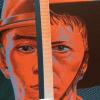
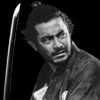


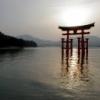




.thumb.jpg.e63b3dcc8d335658069db3ef7b1ff412.jpg)
.thumb.jpg.43c2b7ec572f6cc03566e4bcbf14ed76.jpg)


